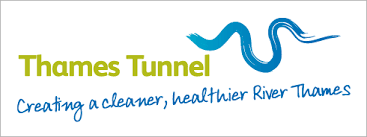Thames Tunnel Phase 2 consultation report published
 The report outlines the company’s response to all the comments it received during the 14-week consultation, which ran from 4th November 2011 to 10th February 2012.
The report outlines the company’s response to all the comments it received during the 14-week consultation, which ran from 4th November 2011 to 10th February 2012.
It confirms the project’s preferred sites for construction work remain unchanged, but pledges an ongoing dialogue with local people to modify proposals, where possible, to try and reduce impacts on surrounding communities. Full Report
On 6 June, Thames Water will announce details of changes made in response to feedback it received in relation to four specific sites, all required for construction work to connect London’s most polluting ‘combined sewer overflows’ (CSOs) to the ’Supersewer’, planned to run broadly beneath the river bed:
Barn Elms; change to access road
Putney Embankment Foreshore; modified site location
Victoria Embankment Foreshore; new design for the permanent works
Albert Embankment Foreshore; change to access road.
None of the proposed changes involve moving to another site completely. The ‘targeted’ consultation will end 28 days later on 4 July (5pm) and is line with the project’s ‘Statement of Community Consultation’, a legally-required document, published on4 November 2011.
Thames Water is notifying residents and businesses within at least 250 metres of the targeted consultation sites by letter, with local newspaper adverts also appearing in the affected areas (17-18 May).
The company has also arranged the following drop-in sessions for people in the targeted consultation areas to find out more about the proposed changes and ask any questions they may have of the project team:
Phil Stride, Head of London Tideway Tunnels at Thames Water, said: “In the 18 months since we first began public consultation for the project, we have worked extremely hard to consult people potentially affected. First and foremost, we are very grateful to everyone who has let us know their views, both for and against the project or the preferred sites. I can personally assure everyone who participated in the process that every step of the way we have carefully taken on board the content of every feedback form, every letter and every petition we have received. Most importantly, where possible we have made changes to reflect the concerns people have raised. The new targeted consultations for our proposed sites at Barn Elms, Putney Embankment, Victoria and Albert Embankment are evidence of our ongoing determination to listen and make changes where they are practically possible within the scope of this critical but challenging project.
Unfortunately, there are no easy or disruption-free options for building this much-needed piece of infrastructure, but we remain as determined as ever to reduce the impacts at the proposed sites as much as possible, whilst ensuring we deliver value for money. During phase two consultation for example a wide number of individuals and organisations called on us to use the river more to transport materials to and fro during the construction phase. We have taken this on board and are now proposing to transport an additional 425,000 tonnes of materials, and 11 per cent increase compared to the proposals made at phase two consultation”.
This summer there will be a further extended period for the public to review Thames Water’s finalised proposals for the Thames Tunnel’s construction and operation. The exact timings have still to be confirmed, but this ‘Section 48 publicity’ will last for a minimum of six weeks.
Early in 2013, the company is scheduled to submit its finalised proposals for scrutiny by the Planning Inspectorate, established to review major projects of national significance. Main construction for the project is planned to begin in 2016. Starting in Acton in west London, the Thames Tunnel is proposed to run 15 miles to Abbey Mills in Stratford in the east of the capital, where it would join up with the Lee Tunnel, already under construction, to transfer the overflows to Beckton Sewage Treatment Works for processing. Currently CSO discharges occur once a week on average, when the capital’s Victorian sewer network fills to capacity, sometimes after as little as 2mm of rainfall.
The number of responses received by Thames Water during phase two public consultation for the Thames Tunnel doubled to 6,000, compared to the 3,000 received during the first phase of consultation for the project (10 September 2010 – 14 January 2011).
The sites attracting the most comments were: Carnwath Road Riverside (Fulham): 3,138 responses, 2 petitions King Edward Memorial Park Foreshore (Shadwell): 1,519 responses, 1 petition Chambers Wharf (Bermondsey): 639 responses Deptford Church Street (Deptford): 217 responses, 3 petitions.
Campaigners opposing the proposed site at King Edward Memorial Park Foreshore submitted the petition with the biggest number of signatories (over 10,000) collected since the close of phase one public consultation.
During phase two consultation, Thames Water held over 57 drop-in sessions at 23 venues fromActonto Beckton, attracting approximately 2,221 visitors. Thames Tunnel project representatives also attended 48 other meetings and briefings with community groups and other interested stakeholders. Of those who completed feedback forms, 696 people felt they had been provided with enough information, compared to 370 who did not.

